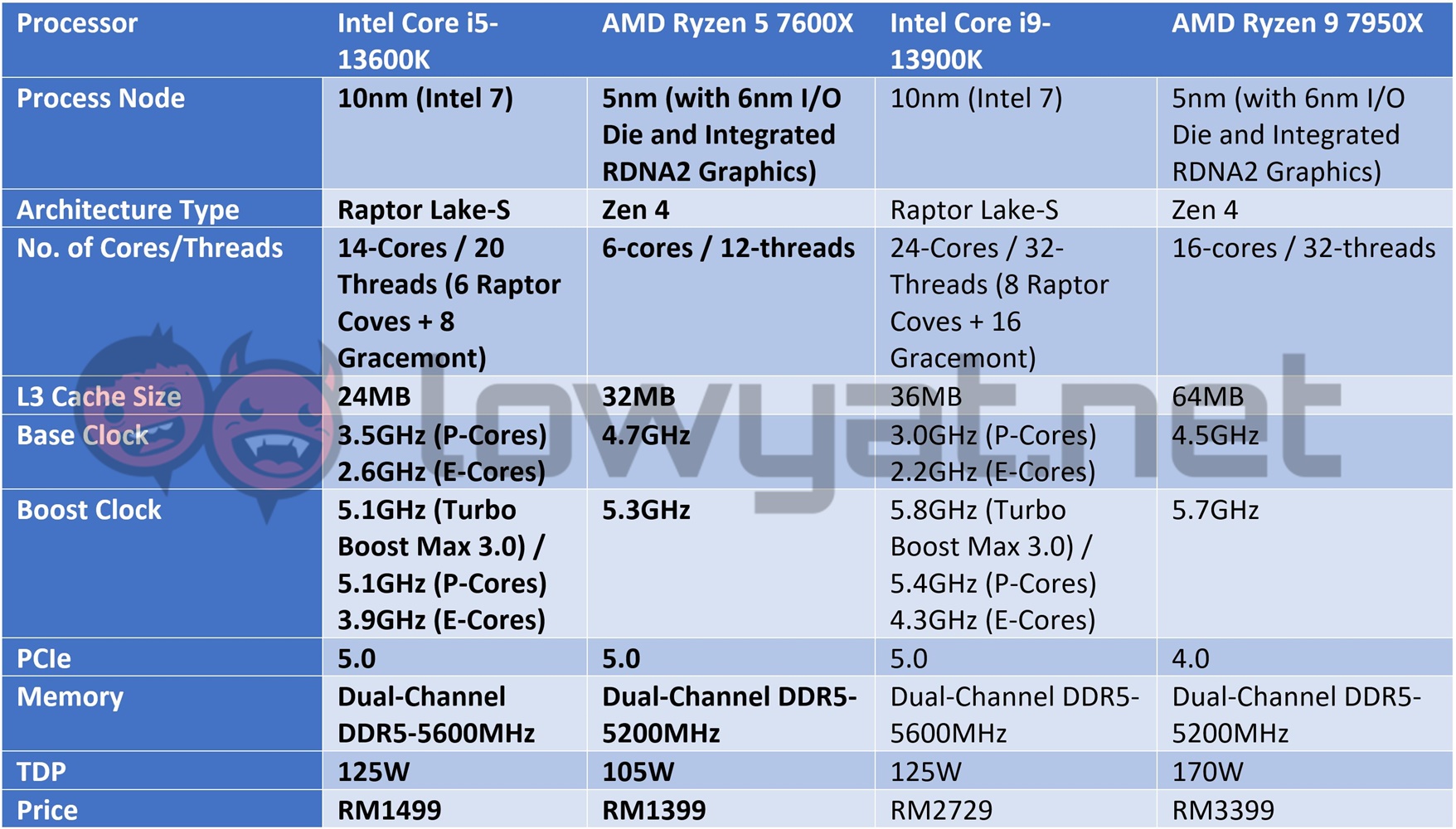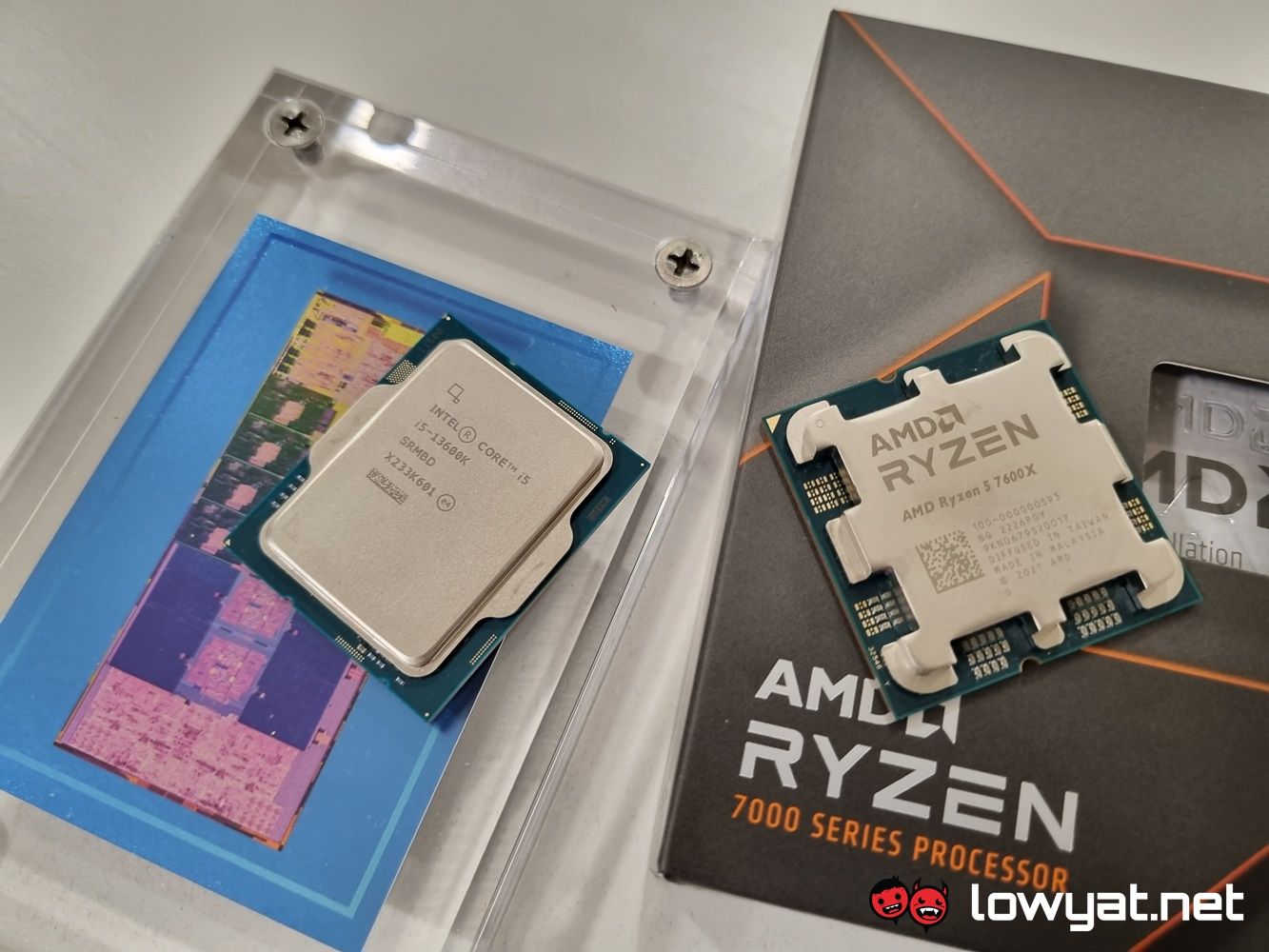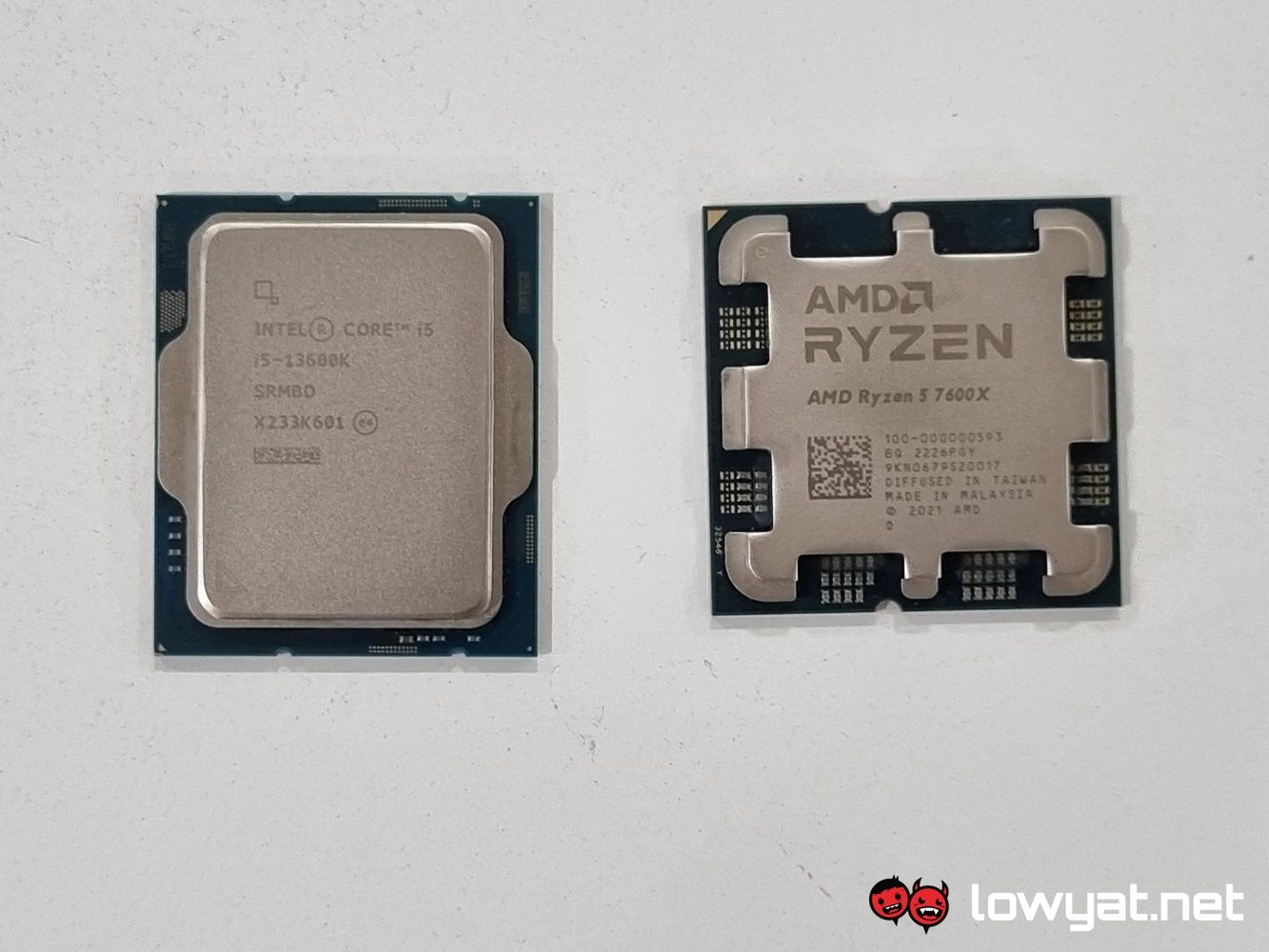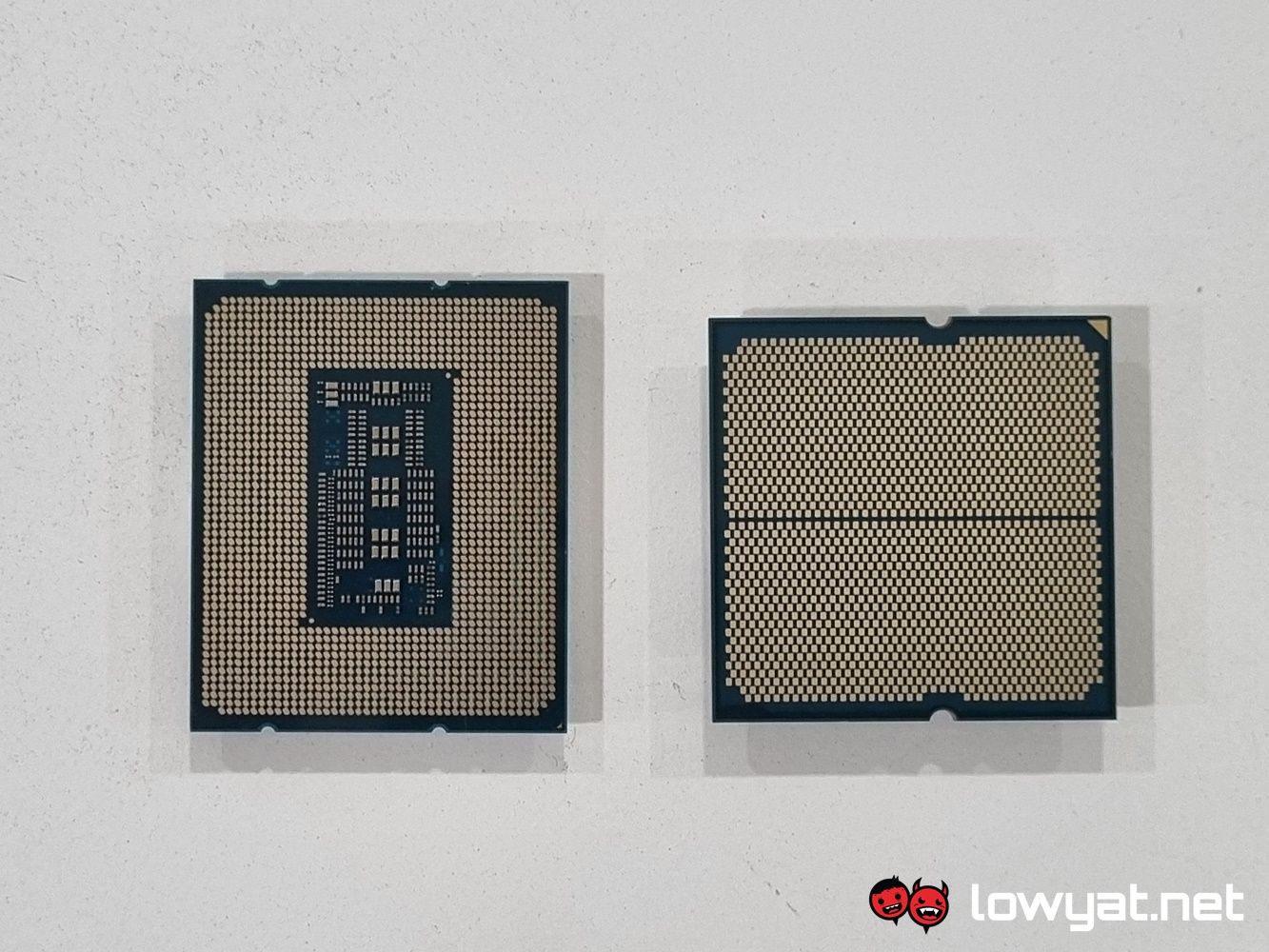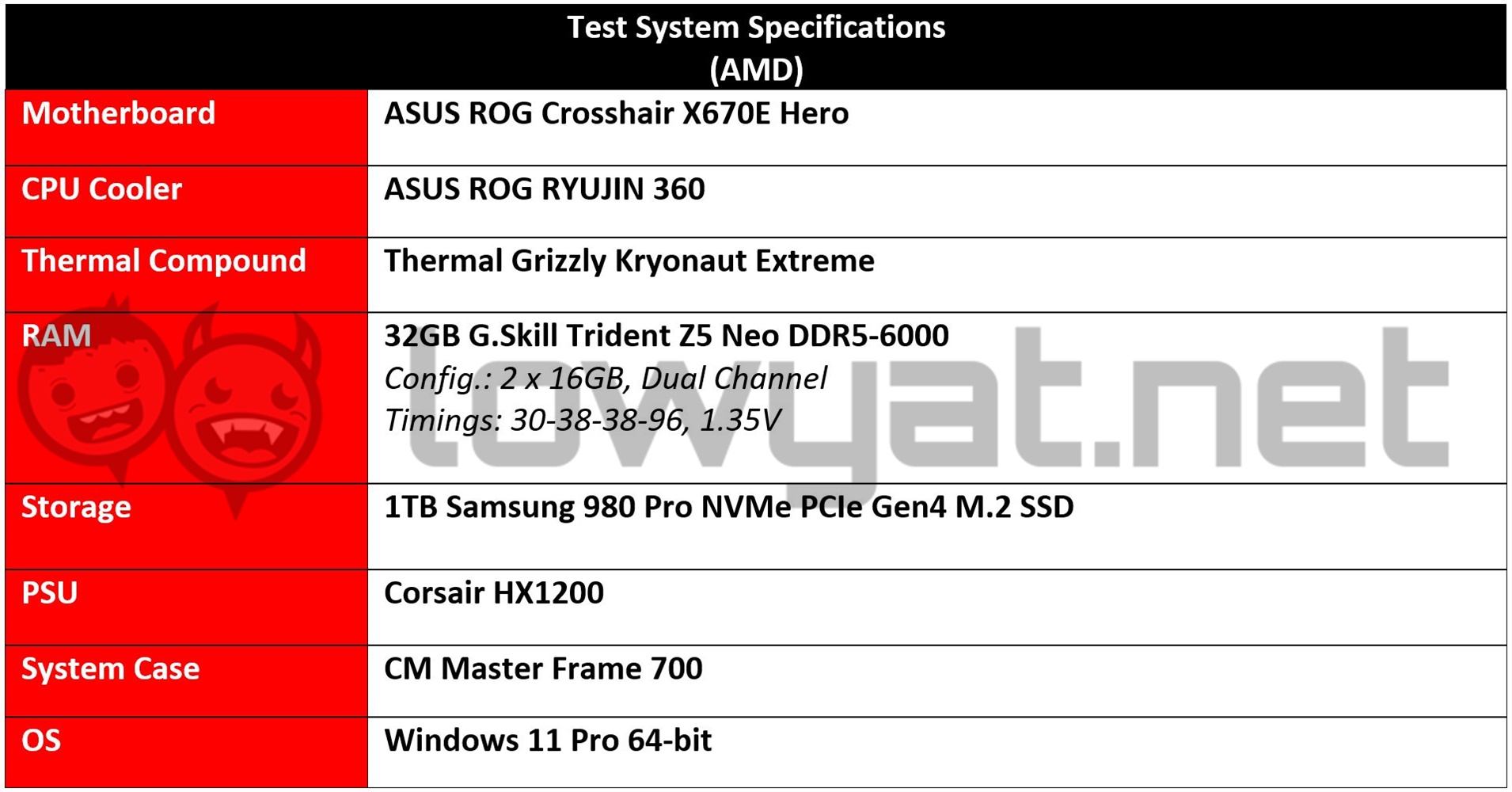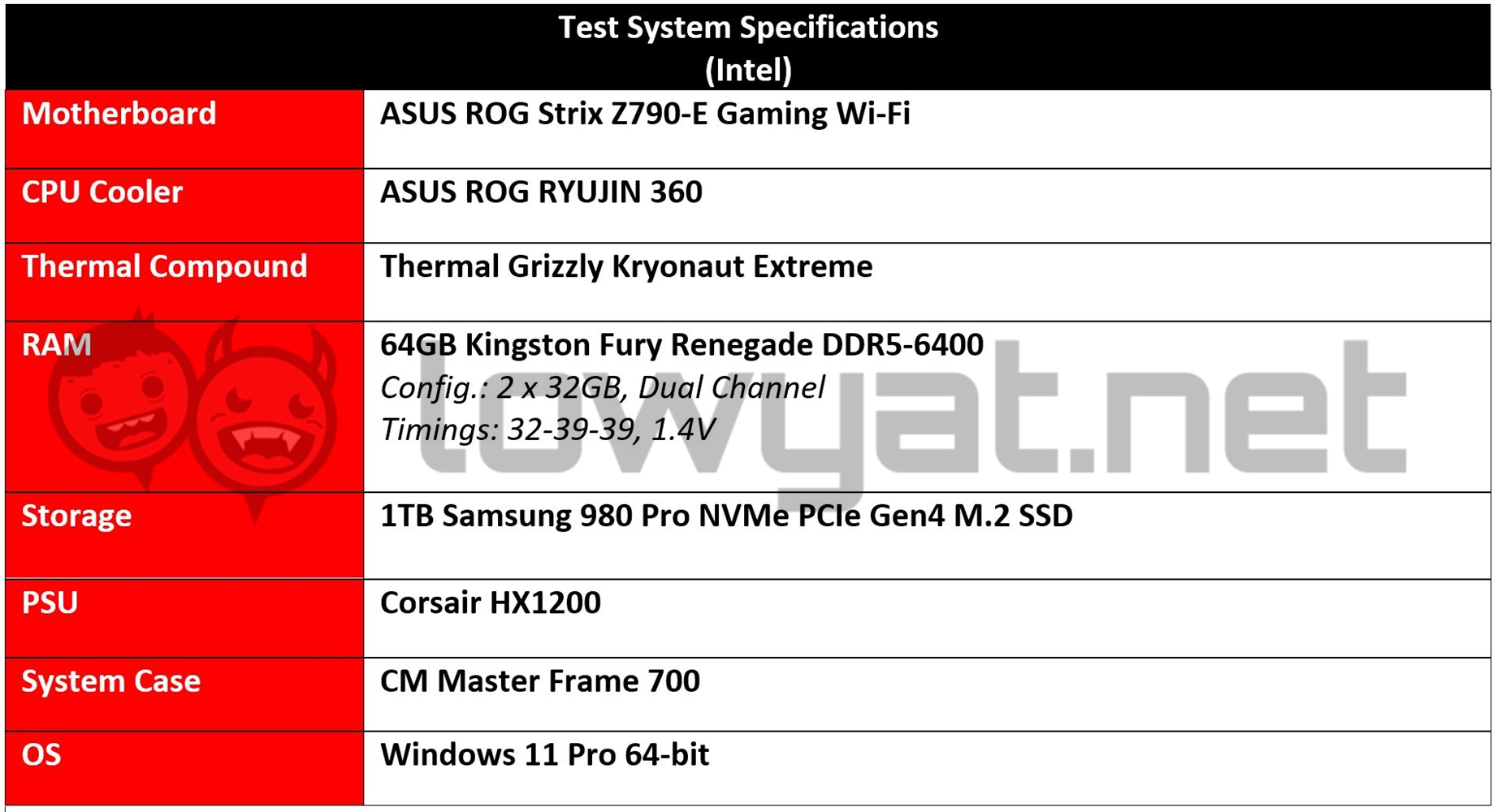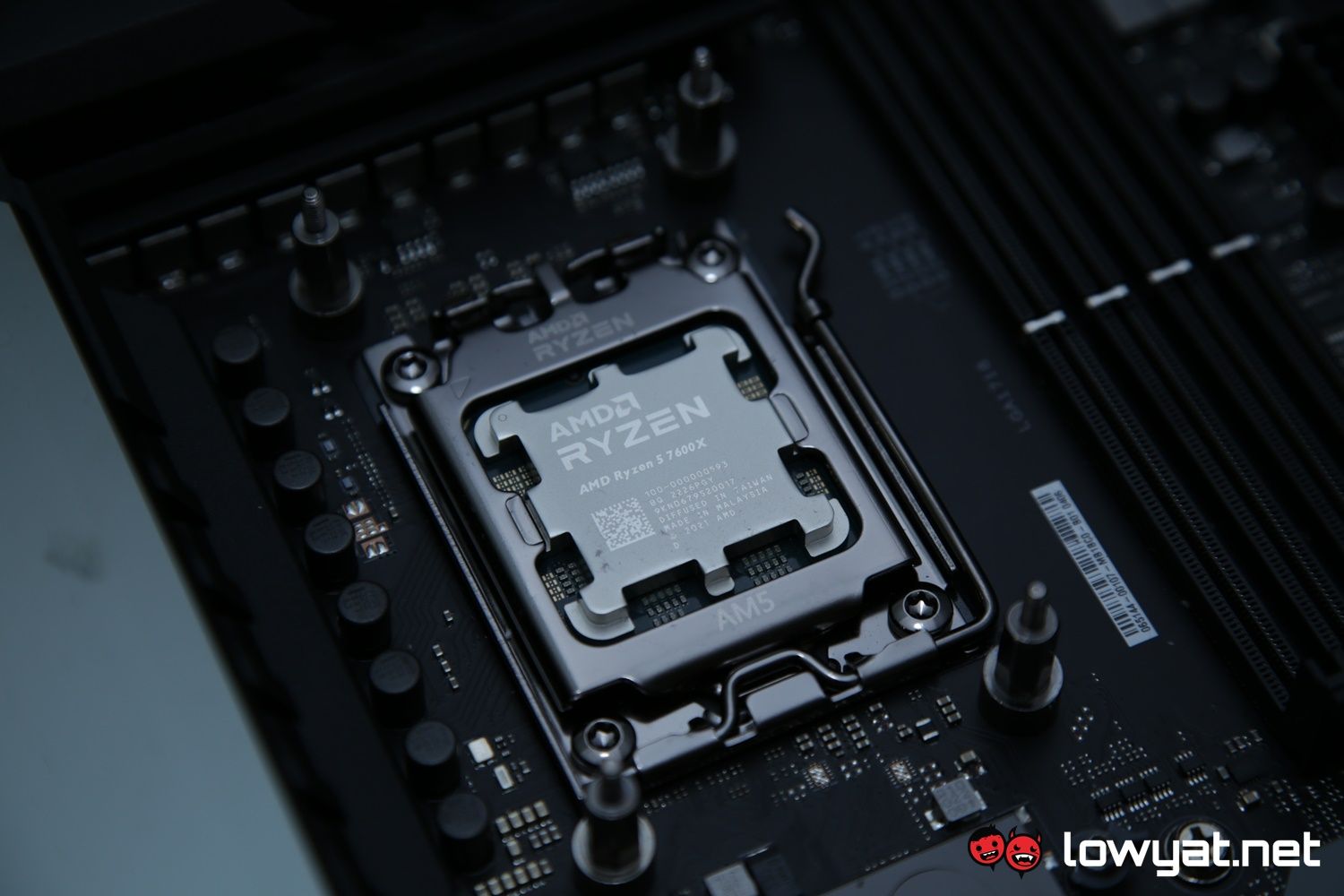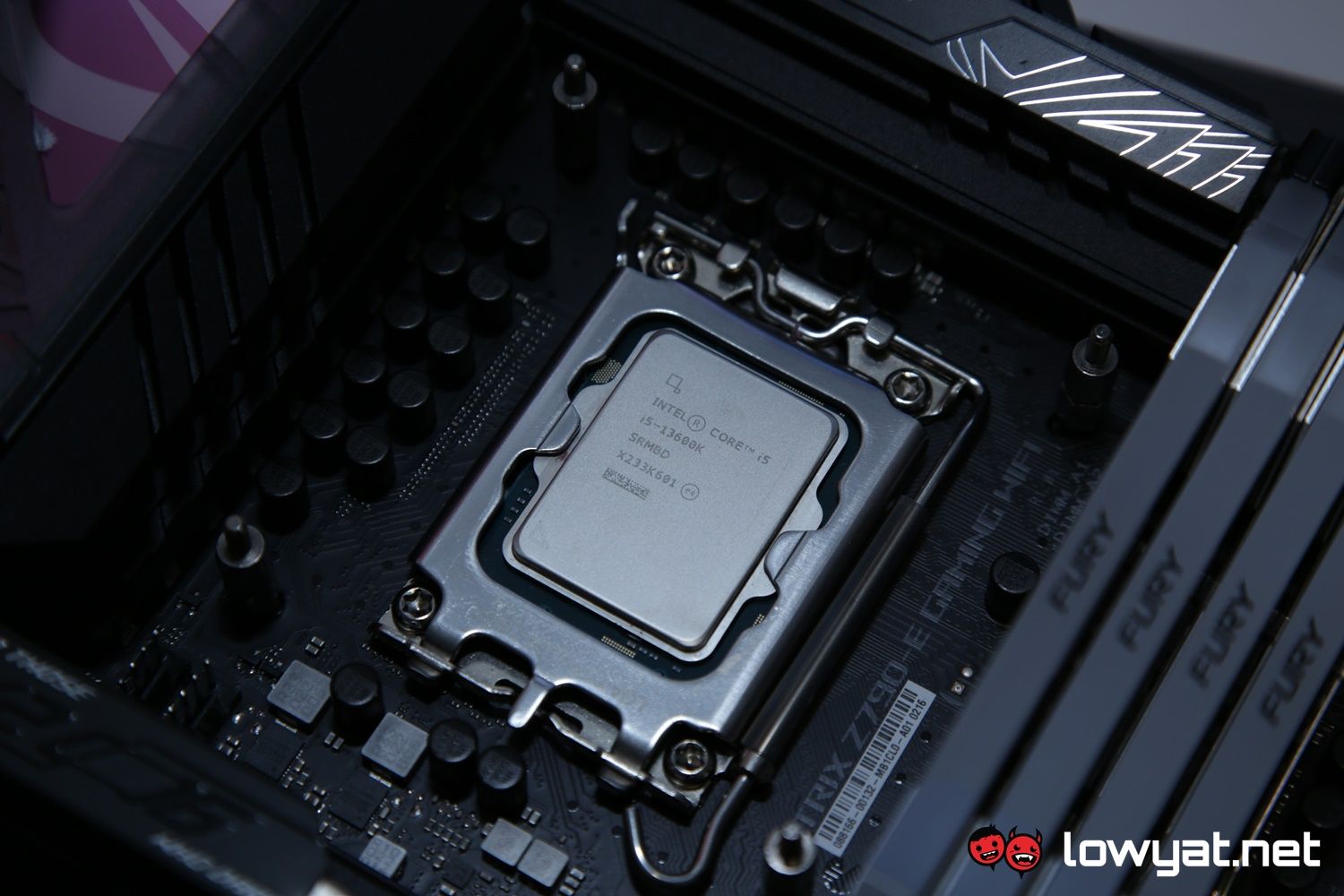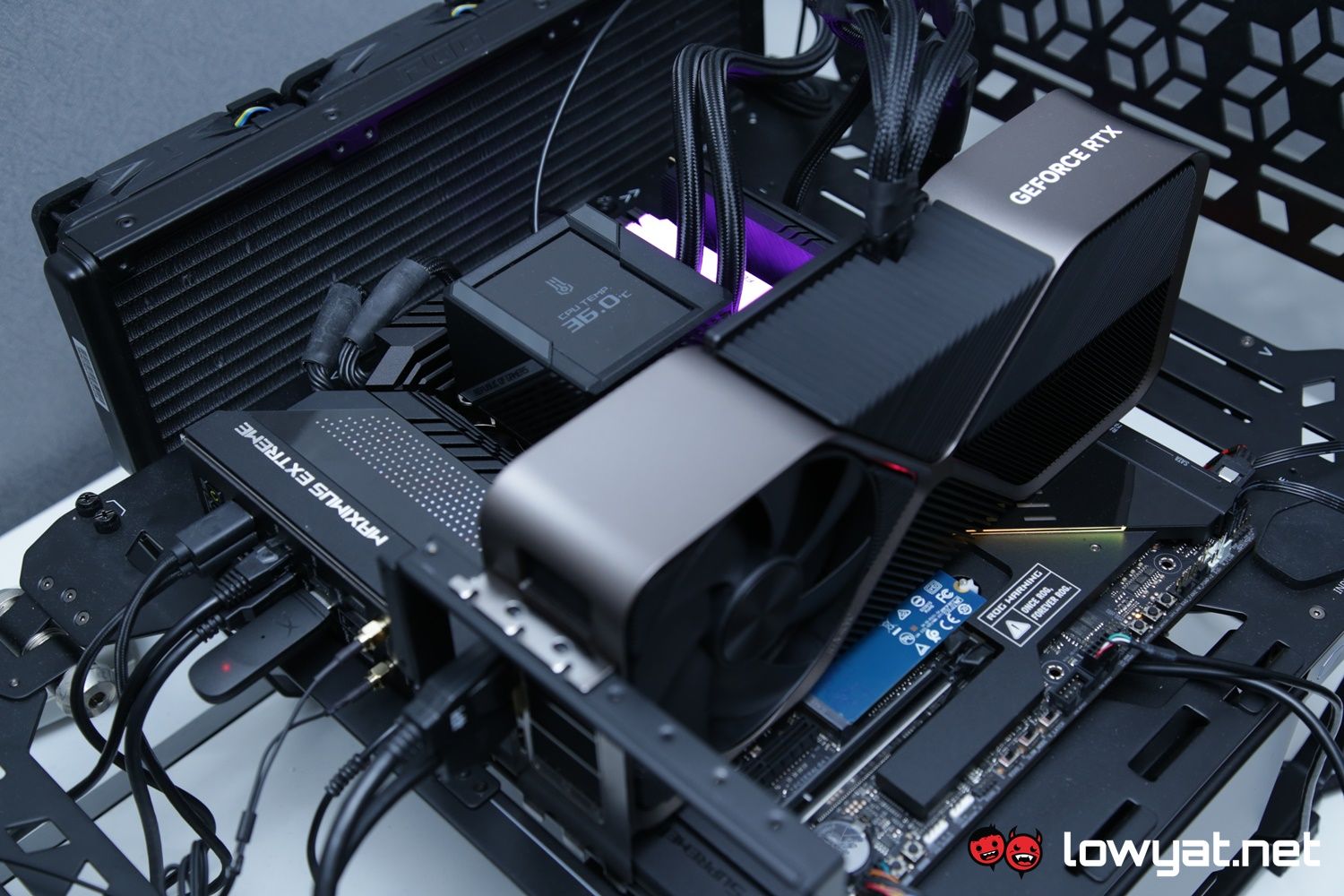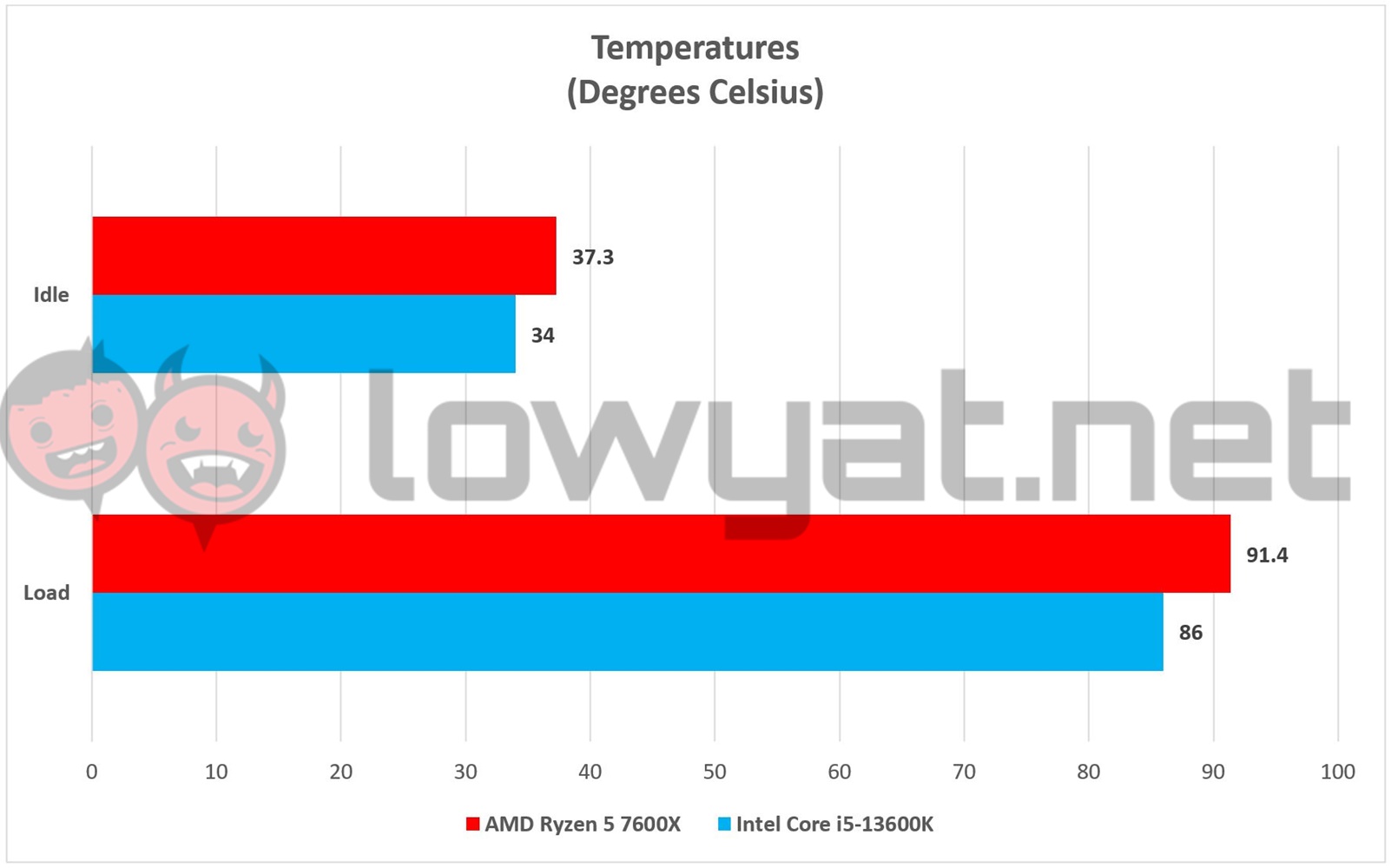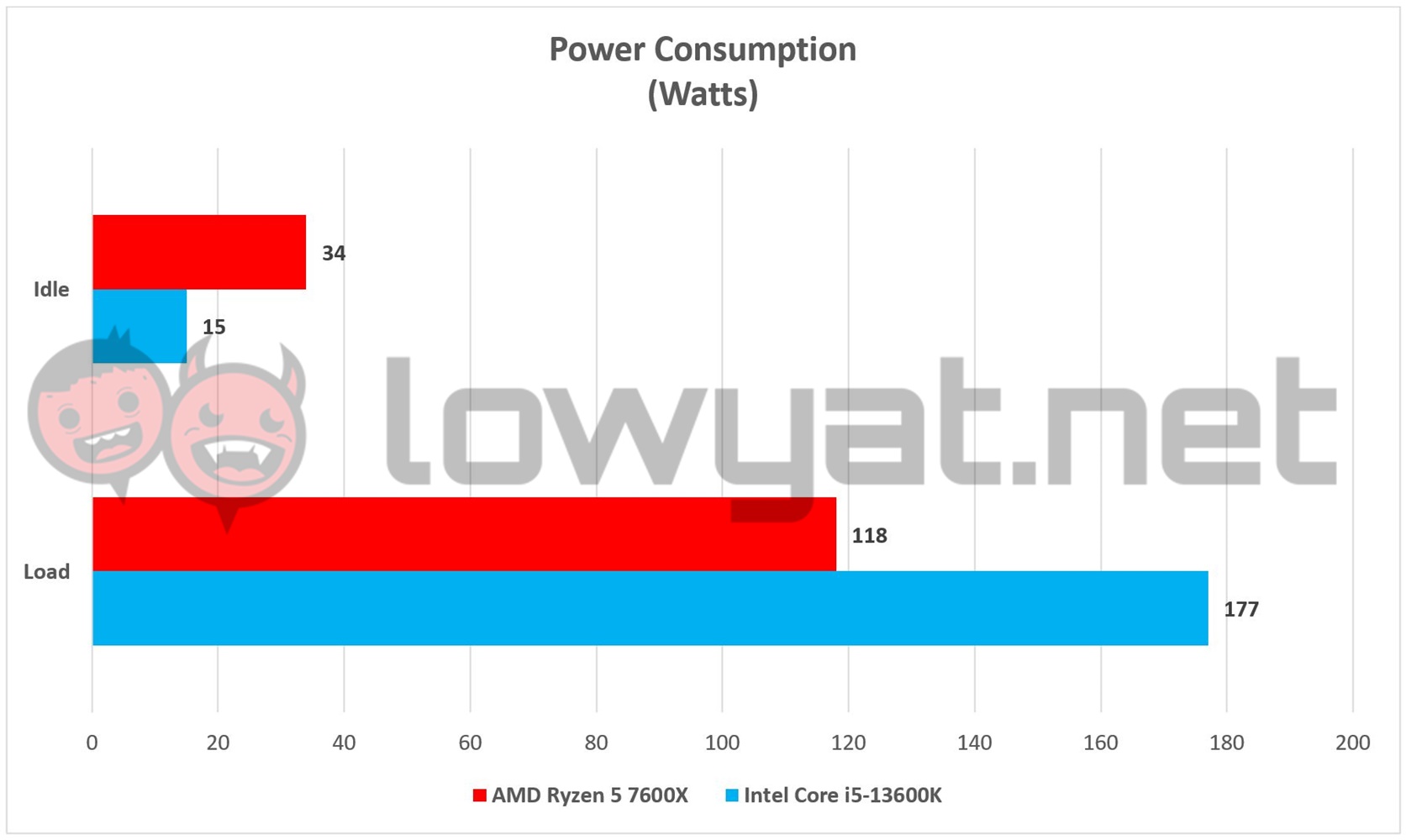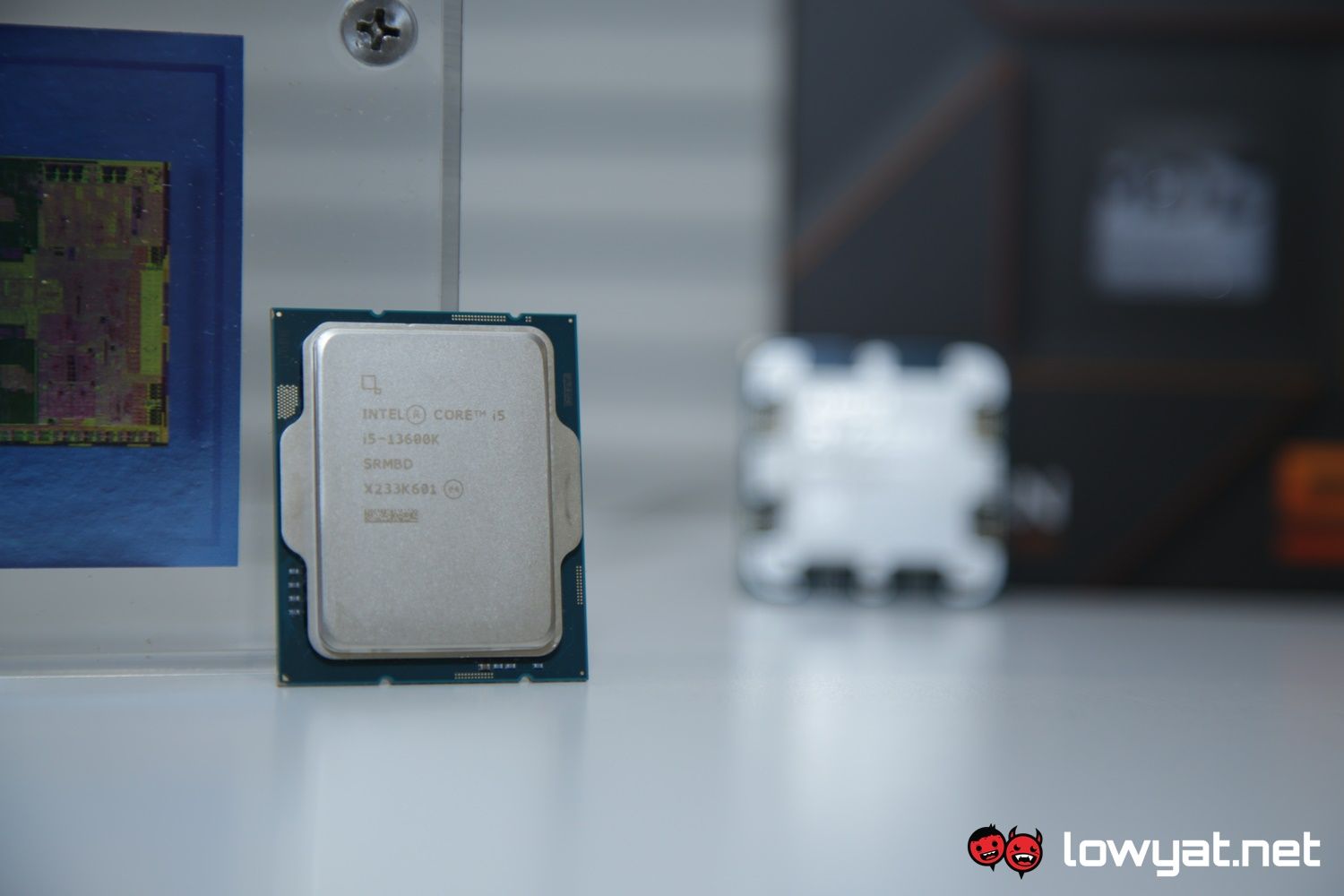With both the 7600X and 13600K offering improved performance over their respective predecessors, as well as being future-proofed with some of the latest standards, we’re here as always to find out which mid-range CPU offers more oomph in performance, and then some.
The Contestants And Specifications
As you can see from the summarised spec sheet above, both the 7600X and 13600K are two very different beasts, with the latter actually looking slightly more impressive than the former. To be clear, that statement doesn’t mean I’m siding with the blue team, but that being said, the benchmark tables below will show you some wildly varying performance metrics across the synthetic and real-world benchmarks.
Design
I’ll make this quick, considering that I’ve already spoken a fair bit on the architectures and technologies for both AMD’s 5nm Zen4 and team blue’s self-titled Intel 7, which is basically another name for its 10nm process node. Starting with AMD, its Ryzen 5 7600X is, as with all other Ryzen 7000 Series CPU, based on the latest Zen4 architecture. Not only that, the new series marks its parent company’s departure from the PGA socket and the embracing of a new LGA1718 socket design, along with next-generation standards, such as DDR5 and PCIe Gen5. The end result of AMD’s transition from PGA to LGA is a uniquely designed CPU, which both the 7600X and its siblings under the Ryzen 7000 Series umbrella share. As I’ve pointed out in my 7950X review, however, the extra edges and corners of the IHS make it that little bit more difficult to remove the thermal goop from, which is a problem for individuals such as me, along with others that constantly have to switch out components, when and whereas necessary. In terms of core count, we’re looking at six cores of raw, unadulterated power.
Moving over to the other side of the ring for the Blue Team, we have the 13600K. Practically speaking, the processor is essentially an improved version of its direct predecessor, Intel’s 12th generation Core i5-12600K. What sort of improvements, you ask? As a start, it has double the number of E-Cores now at eight, while the P-Cores have now been replaced with Raptor Cove cores. In addition, Intel ramped the clockspeeds for both P-Cores and E-Cores to 5.1GHz and 3.9GHz, respectively. To that end, this also marks the first time that a mid-range CPU such as the 13600K has ever shipped out with a 14-cores, 20-threads, configuration.
The Testbenches
As this review will be looking at both the 7600X and 13600K side-by-side, I’m obviously going to be needing two separate systems to benchmark the CPUs. For the AMD CPU, the choice of the ASUS ROG Crosshair X670E Hero was simple, as the chipmaker had already provided me with the necessary components. Other components paired with the 7600X in this test include the 32GB G.Skill Trident Z5 Neo DDR5-6000 RAM, which supports AMD’s EXPO technology. As for the 13600K, the motherboard I am using is also from ASUS and more specifically, the ROG Strix Z790-E Gaming Wi-Fi. Honestly speaking, I would have preferred the ROG Maximus Z790 Extreme that I used when benchmarking the 13900K, but unfortunately, there was issues with the motherboard that I had not foreseen happening. As such, I had no choice but to replace it. Moving on, additional components used to test the 13600K include 64GB of Kingston Fury Renegade DDR5-6400 RAM. For the record, these are the same memory kits that I used in my 13900K review as well, as frankly speaking, the additional 16GB and 400MT/s in speed didn’t really put a dent in the performance between the two CPUs.
Lastly, and to keep things uniform, the GPU I am using to benchmark both the 7600X and 13600K is NVIDIA’s GeForce RTX 4090 FE.
The Benchmarks
I’ll be honest. When I first began my testing with the CPUs, I honestly thought that the 7600X would, like its more powerful sibling, the 7950X, would be the dominant force throughout this showdown. But no, that clearly isn’t the case and to that end, I am mildly impressed that Intel’s 13600K was able to prove me wrong. That is, on a synthetic level, at least. It is clear that those extra cores in the 13600K do help the CPU, and not just by a small margin either. In virtually all of the synthetic benchmarks, the 7600X can actually be seen trailing behind its rival, with only one or two gains in very specific elements of the list. Those elements, by the way, suggest that it simply has better raw power and performance, but is not necessarily efficient in the way it does so. But as impressive as the 13600K is at navigating the waters of the synthetic benchmarks, its lead takes a very stark and glaring about-turn to the 7600X’s performance when it comes to gaming, as it appears. Across all titles, and in both 1440p and Full HD resolutions, the CPU from Team Red’s camp is the clear winner across the board. Hell, the only time I saw it falter to Intel’s offering was with Cyberpunk 2077 and even then, it was only in the latter Full HD resolution.
Power Consumption and Temperatures
While the performance for the 7600X and 13600K being what they are, it comes as no surprise then that the trade-off to all that raw power is heat, along with the power that is consumed to generate said performance. In this case, it is the former that seems to run hotter than the latter, either when running idle or put to task. For that matter, I think it best to mention that these temperatures were obtained through an open testbench in my lab. Further, the ambient temperature of the room is kept at a constant 20°C. So, the fact that the 7600X is the one that seems to edge closer to the 100°C ceiling does say something about the CPU’s heat management over the 13600K. And that’s with it running straight out of the box, too. That the 7600X generates more heat than the 13600K is also a little baffling, especially since AMD’s CPU is, as you can see from the chart above, the one that consumes less power than the 13600K. Off the wall, Intel’s own mid-range CPU is pulling 59W more power on a full load than AMD’s, but as shown in the synthetic benchmarks, that power consumption is more or less justified, even if it’s a little lopsided.
And the Winner Is…
Intel Core i5-13600K
After much deliberation, I believe the title belt of this fight belongs to the 13600K, and for a handful of reasons. Firstly, and despite the fact that it is not the CPU with the best ringgit-to-gaming ratio, it still has the better performance-per-watt, compared to the Ryzen 5 7600X. I know this statement is going to divide the room, but at the end of the day, the endgame I am looking for here is a balance between productivity and gaming. Yes, the 7600X is clearly the better gaming CPU here by leaps and bounds, but that shouldn’t be grounds to dismiss the 13600K as a slouch. Its frame count is clearly lower than Team Red’s CPU, but on the whole, it’s still churning out more than 100 fps on average, across the board. For another matter, you have to give Intel credit for what it’s done, not just with this CPU, but with Raptor Lake: in just one generation, the chipmaker has managed to turn the tides against its rival, and provide consumers with something the DIY and desktop PC market has been deprived of for so long: a viable choice. At this stage, the only thing that I believe would act as a deterrent against getting the 13600K over the 7600X is a price difference of RM100. At the time of writing, the mid-range Intel CPU retails at an SRP of RM1499, while the Red CPU costs RM1399. Ultimately though, I firmly believe that the Core i5-13600K is the winner of this round.
